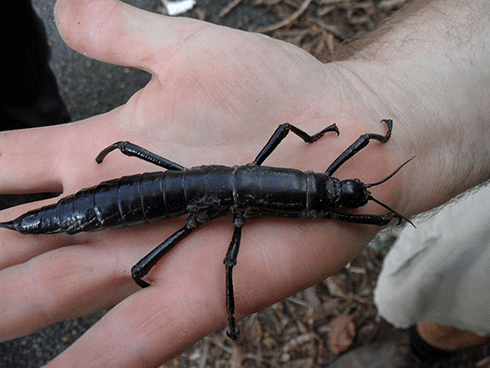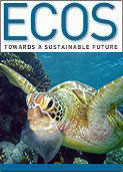
|
Published: 26 August 2013
Human traits the X-factor in species conservation?
In a paper just published in the journal Biodiversity Conservation, researchers suggest anthropomorphism is often overlooked as a powerful tool for promoting low-profile species that are either endangered or require urgent attention.

|
|
Would life as a Miniscule cartoon character change its fate? The critically endangered Lord Howe Island stick insect, Dryococelus australis, was thought to have become extinct around 1920 after the introduction of rats to the island. However, in 2001 a small population of the species was rediscovered on Balls Pyramid, a rocky outcrop 23 km from Lord Howe. Credit: Wikimedia Commons/Granitethighs under CC BY-SA 3.0
|
At present, anthropomorphism in conservation is limited to social, intelligent animals, such as chimpanzees, polar bears and dolphins. This would imply that other species are not worthy of conservation because they are not like humans in the 'right' ways, say the researchers.
By making conservationists more aware of how people construct anthropomorphic meanings around species and how they engage with species and attribute value to their characteristics – for example, people attributing personalities and emotions to pets and even livestock – they can create more effective conservation outreach programs.
'Anthropomorphisation of species is a common way for people to relate to other species. But as a conservation tool, it is under-used and is not being utilised as a way of effectively promoting the relationships between people and nature through conservation programs,’ said co-author, Diogo Verissimo from the University of Kent in the UK.
'Despite there being some limitations of using anthropomorphism – for example, inappropriate expectations of animals' behaviour or species picking up negative social stereotypes by being human-like – there is a need for more research in marketing and social sciences that will lead to more effective use of anthropomorphism in conservation outreach.'
Lead author, Dr Meredith Root-Bernstein of the University of Oxford, said: 'Scientists have been wary of anthropomorphism for a long time, because it was seen as leading to unscientific hypotheses about animal behaviour.
‘But as conservationists we can look at it as a kind of popular folk theory of the similarities between humans and all other species. These popular ways of relating to the natural world are powerful and we should try to understand and work with them.'
The favouring of ‘charismatic’ species over ‘less cute’ ones was recently criticised by Professor Hugh Possingham of the National Environmental Research Program’s (NERP) Environmental Decisions Hub and the University of Queensland (UQ).
‘Around 80 mammal species are used by international non-governmental organisations (NGOs) to raise funds for conservation,’ he says. ‘These flagship species, such as panda bears, tigers, lions and rhinos, are charismatic and have high marketing appeal, leading to the success of sponsorship programs.
‘However, if money is being raised for 80 charismatic species, what happens to the other 1,000 threatened mammal species and the 19 000 threatened plants, birds, reptiles, frogs, insects and obscure species?’
Source: EurekAlert! and UQ



